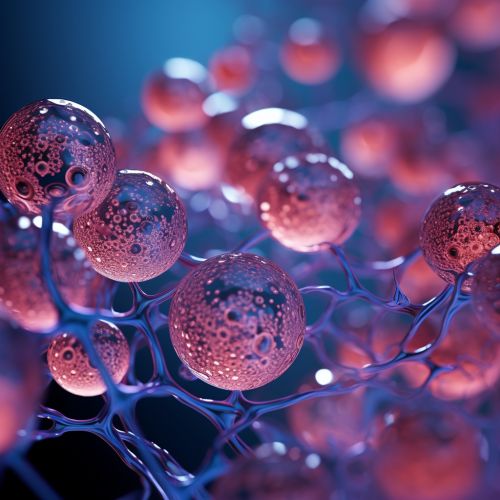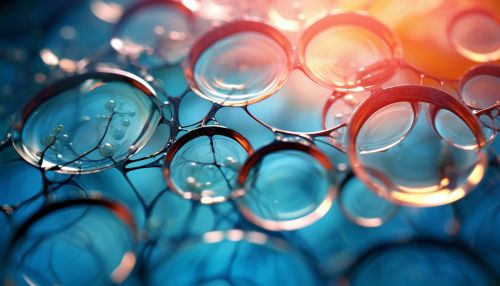The Role of Stem Cells in Organ Regeneration
Introduction
Stem cells are undifferentiated cells capable of both self-renewal and differentiation into various cell types. They play a critical role in the development, growth, repair, and regeneration of tissues and organs in multicellular organisms. In the context of organ regeneration, stem cells have the potential to replace damaged or diseased cells, thereby restoring organ function. This article will delve into the role of stem cells in organ regeneration, focusing on the types of stem cells involved, the mechanisms by which they contribute to organ regeneration, and the potential applications and challenges in this field of research.
Types of Stem Cells Involved in Organ Regeneration
There are several types of stem cells that play a role in organ regeneration, including embryonic stem cells (ESCs), adult or somatic stem cells, and induced pluripotent stem cells (iPSCs).
Embryonic Stem Cells
ESCs are derived from the inner cell mass of the blastocyst, an early-stage preimplantation embryo. They are pluripotent, meaning they have the ability to differentiate into any cell type in the body. ESCs have been widely studied for their potential in organ regeneration due to their pluripotency and unlimited self-renewal capacity.
Adult or Somatic Stem Cells
Adult or somatic stem cells are undifferentiated cells found in differentiated tissues of the adult organism. They are multipotent, meaning they can differentiate into a limited number of cell types related to their tissue of origin. Examples include hematopoietic stem cells, which give rise to all types of blood cells, and mesenchymal stem cells, which can differentiate into various cell types such as osteocytes, chondrocytes, and adipocytes.
Induced Pluripotent Stem Cells
iPSCs are adult cells that have been genetically reprogrammed to an embryonic stem cell-like state. Like ESCs, iPSCs are pluripotent and can differentiate into any cell type in the body. iPSCs have gained significant attention in the field of organ regeneration due to their potential to generate patient-specific cells and tissues, thereby avoiding issues related to immune rejection.


Mechanisms of Stem Cell-Mediated Organ Regeneration
Stem cells contribute to organ regeneration through several mechanisms, including direct differentiation, paracrine signaling, and immunomodulation.
Direct Differentiation
In direct differentiation, stem cells differentiate into the specific cell types needed for organ regeneration. For example, in the heart, stem cells may differentiate into cardiomyocytes, endothelial cells, and smooth muscle cells to replace the damaged tissue and restore heart function.
Paracrine Signaling
In paracrine signaling, stem cells secrete growth factors and cytokines that promote tissue repair and regeneration. These factors can stimulate resident stem cells or progenitor cells in the tissue to proliferate and differentiate, enhance angiogenesis, modulate inflammation, and inhibit apoptosis.
Immunomodulation
Stem cells, particularly mesenchymal stem cells, have immunomodulatory properties. They can modulate the immune response by interacting with various immune cells, such as T cells, B cells, natural killer cells, and dendritic cells. This immunomodulation can reduce inflammation and promote tissue repair and regeneration.
Applications of Stem Cells in Organ Regeneration
Stem cells have been explored for their potential in regenerating various organs, including the heart, liver, kidney, lung, and pancreas.
Heart Regeneration
Heart disease, particularly myocardial infarction, leads to the loss of cardiomyocytes and heart failure. Stem cell therapy, using cells such as ESCs, iPSCs, and cardiac stem cells, has been investigated for its potential to regenerate the damaged myocardium and restore heart function.
Liver Regeneration
The liver has a remarkable capacity for regeneration. However, in conditions such as cirrhosis and end-stage liver disease, this regenerative capacity is impaired. Stem cells, particularly hepatic stem cells and mesenchymal stem cells, have been explored for their potential to regenerate the liver and restore its function.
Kidney Regeneration
Chronic kidney disease can lead to end-stage renal disease, requiring dialysis or kidney transplantation. Stem cells, particularly renal stem cells and mesenchymal stem cells, have been studied for their potential to regenerate the kidney and restore renal function.
Lung Regeneration
Chronic lung diseases, such as chronic obstructive pulmonary disease and idiopathic pulmonary fibrosis, can lead to the loss of lung tissue and respiratory failure. Stem cells, particularly lung stem cells and mesenchymal stem cells, have been investigated for their potential to regenerate the lung and restore respiratory function.
Pancreas Regeneration
Type 1 diabetes is characterized by the loss of insulin-producing beta cells in the pancreas. Stem cells, particularly pancreatic stem cells and iPSCs, have been explored for their potential to regenerate beta cells and restore insulin production.
Challenges and Future Directions
While stem cells hold great promise for organ regeneration, there are several challenges that need to be addressed. These include issues related to stem cell sourcing, control of stem cell differentiation, immune rejection, risk of tumorigenesis, and ethical considerations. Despite these challenges, ongoing research and technological advancements are expected to pave the way for the successful application of stem cells in organ regeneration.
